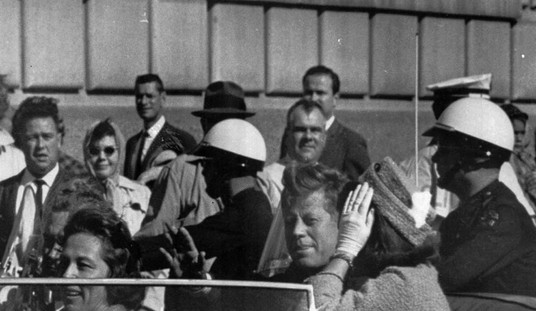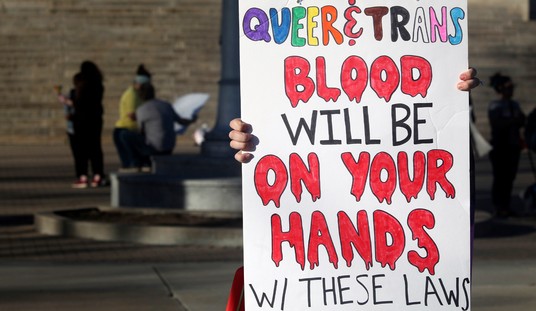During the 2012 election, President Obama ran ads saying that “women are paid 77 cents on the dollar for doing the same work as men.” This statistic is used pervasively by liberals to lobby support for the Paycheck Fairness Act. In his State of the Union address, President Obama asked “Congress to declare that women should earn a living equal to their efforts, and finally pass the Paycheck Fairness Act this year.” The problem is that the 77¢ figure isn’t accurate.
Last June, Factcheck.org called the ad an “exaggeration.”
Pamela Coukos, a senior program adviser at the Office of Federal Contract Compliance Programs, wrote in the Labor Department’s “official blog”:
Pamela Coukos, June 7, 2012: Economists generally attribute about 40% of the pay gap to discrimination – making about 60% explained by differences between workers or their jobs.
Similarly, an economist and a researcher at the Federal Reserve Bank of St. Louis said last year that the economic literature indicates the actual pay gap between men and women with similar characteristics is “much lower” than the raw gap. Despite the gains in recent decades, they wrote:
Natalia Kolesnikova and Yang Liu, October 2011: Men are more likely to be lawyers, doctors and business executives, while women are more likely to be teachers, nurses and office clerks. This gender occupational segregation might be a primary factor behind the wage gap.
Sabrina Schaeffer, Executive Director of the Independent Women’s Forum, added:
The fact is there are other reasons that this small pay gap may persist, including biology, social pressures, and cultural norms. As much as the left may want men and women to be the same, we know they are different and genetic makeup, brain structure, and innate proclivities and motivations may factor into women’s choices and wages.
[…]
Unfortunately, my mere suggestion that there are other factors at play – beyond discrimination – lands me with the charge of “victim-blaming.”
Additionally, women tend to work fewer hours than men, which could also partially explain this discrepancy in pay. As Hans Bader of the Competitive Enterprise Institute wrote on February 13:
As The Washington Post‘s Glenn Kessler notes, government data shows women work fewer hours than men, which explains much of the apparent pay gap: “since women in general work fewer hours than men in a year, the statistics used by the White House may be less reliable for examining the key focus of the legislation — wage discrimination.” I discuss some other unfounded claims made in support of the Paycheck Fairness Act at this link.
As Steve Tobak noted at CBS News,
Men are far more likely to choose careers that are more dangerous, so they naturally pay more. Top 10 most dangerous jobs (from the U.S. Bureau of Labor Statistics): Fishers, loggers, aircraft pilots, farmers and ranchers, roofers, iron and steel workers, refuse and recyclable material collectors, industrial machinery installation and repair, truck drivers, construction laborers. They’re all male-dominated jobs. . .Men are far more likely to take work in uncomfortable, isolated and undesirable locations that pay more. Men work longer hours than women do. The average fulltime working man works six hours per week or 15 percent longer than the average fulltime working woman.
According to the federal Bureau of Labor Statistics, 92 percent of all workers who die on the job are men, even though only a bare majority of all workers are men. These examples are at odds with the assumption of many supporters of the Paycheck Fairness Act and the Ledbetter Act that pay disparities are simply the result of gender bias or sexism.
The Society for Human Resource Management contends the Paycheck Fairness Act “would effectively prohibit employers from using many legitimate factors to compensate their employees, including professional experience, education, training, employer need, local labor market rates, hazard pay, shift differentials and the profitability of the organization.”
Lastly, it never ceases to amaze me how liberals fail to hold their own side accountable in this fight. Andrew Stiles, who is now with National Review, wrote for the Washington Free Beacon in May of 2012 that:
Barbara Mikulski (D., Md.), Patty Murray (D., Wash.), Debbie Stabenow (D., Mich.), Dianne Feinstein (D., Calif.) and Barbara Boxer (D., Calif.)—three pay their female staff members significantly less than male staffers.
Murray, who has repeatedly accused Republicans of waging a “war a women,” is one of the worst offenders. Female members of Murray’s staff made about $21,000 less per year than male staffers in 2011, a difference of 33.8 percent.
That is well above the 23 percent gap that Democrats claim exists between male and female workers nationwide. The figure is based on a 2010 U.S. Census Bureau report, and is technically accurate. However, as CNN’s Lisa Sylvester has reported, when factors such as area of employment, hours of work, and time in the workplace are taken into account, the gap shrinks to about 5 percent.
A significant “gender gap” exists in Feinstein’s office, where women also made about $21,000 less than men in 2011, but the percentage difference—41 percent—was even higher than Murray’s.
Boxer’s female staffers made about $5,000 less, a difference of 7.3 percent.
So, this isn’t part of the war on women. It’s not even an issue that requires immediate federal action. It’s part of the liberal arsenal of wedge issues, which they use to avoid any discussion about passing a budget, the economy, etc.









Join the conversation as a VIP Member